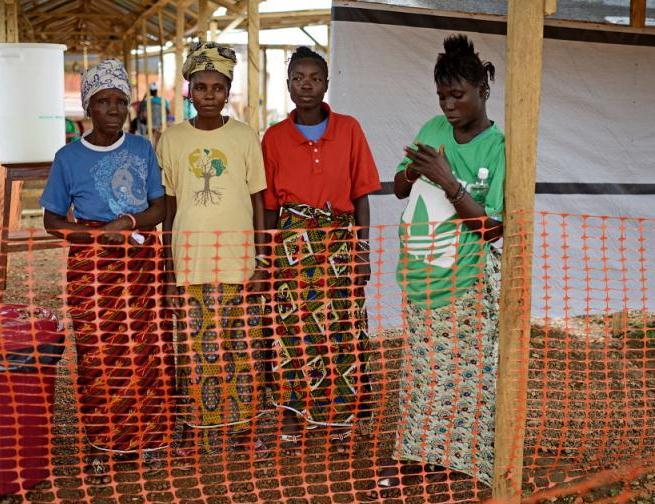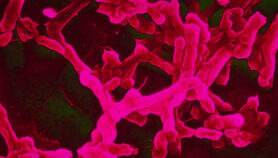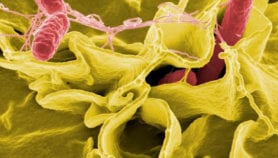By: Andrea Rinaldi
Send to a friend
The details you provide on this page will not be used to send unsolicited email, and will not be sold to a 3rd party. See privacy policy.
The Ebola virus mostly spread nationally in Sierra Leone, according to the latest study of its genome, indicating that containment efforts at its borders may have worked.
For the study, a global team sequenced Ebola genomes from 232 patients in Sierra Leone between June and December 2014. This showed that, after the initial phase of outbreak when the virus was introduced from Guinea, human-to-human transmission happened primarily within the country.
“Those analyses demonstrate what components of response were most effective at curtailing the epidemic.”
Jeffrey Townsend, Yale University, United States
The findings suggest that cross-border transmission played a limited part in the epidemic’s development, probably thanks to measures to contain the outbreak at Sierra Leone’s borders with Guinea and Liberia, the researchers say in a paper published in Cell last week (18 June).
“Such an insight helps direct resources toward in-country treatment, rather than on personnel for tightening Sierra Leone’s national borders,” says Jeffrey Townsend, an evolutionary biologist from Yale University in the United States who was not involved in the study.
The 2014 Ebola outbreak was by far the largest and longest to date, meaning that scientists could observe for the first time how the virus evolved when shifting from its original animal host to humans, a transfer known as zoonosis.
“Those analyses demonstrate what components of response were most effective at curtailing the epidemic,” says Townsend. “They provide insight that could prevent the next zoonotic outbreak from becoming the horror that recently tore through West Africa.”
To increase global research collaboration on combating Ebola, the team behind the Cell paper made its data public as soon as it was produced, beginning in December 2014.
“The authors should be applauded for releasing their data ahead of publication,” says Oliver Pybus, an infectious disease researcher at the University of Oxford in the United Kingdom. “It’s a model of how data can and should be shared during outbreak situations.”
Ebola is slowly fading, but cases are still being reported from Guinea and Sierra Leone. When this article went online, around 27,300 people had contracted Ebola, and 11,169 people had died from the virus in West Africa. On 9 May, the WHO declared Liberia to be Ebola-free, 42 days after the last victim of the disease in the country was buried.
But paradoxically, Ebola’s retreat in West Africa is hampering the development of drugs aimed at fighting it off. As cases become rarer, it is harder to enrol enough patients in clinical trials to get statistically valid results.
For example, the trial of the antibody cocktail ZMapp, which began in Liberia in February, is being moved for this reason.
The study will compare ZMapp against standard supportive care without medicine, but only a fraction of the required number have been enrolled so far. The trial is being run by the US National Institutes for Allergy and Infectious Diseases (NIAID).
According to Anthony Fauci, NIAID’s director, the partnership also plans to enrol patients in Guinea, with support from the country’s health ministry and the French National Institute of Health and Medical Research.
References
[1] Daniel J. Park and others Ebola Virus Epidemiology, Transmission, and Evolution during Seven Months in Sierra Leone Ebola virus epidemiology, transmission, and evolution during seven months in Sierra Leone (Cell, 18 June 2015)
[2] Stephen K. Gire Genomic surveillance elucidates Ebola virus origin and transmission during the 2014 outbreak (Science, 28 August 2014)














